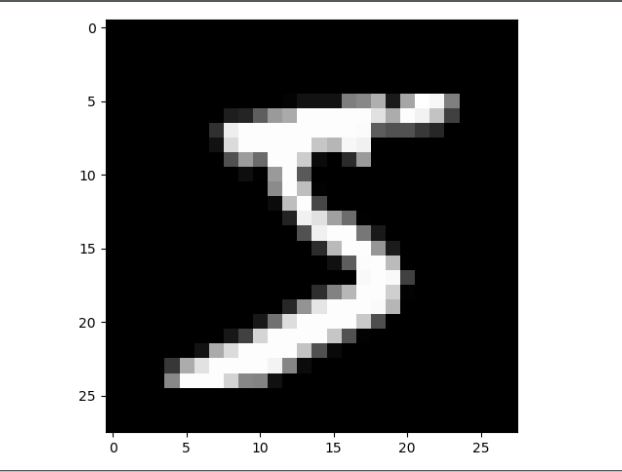第一步: 进行数据的读取,使用request进行网址内容的抓取
from pathlib import Path import requests DATA_PATH = Path('data') Path = DATA_PATH / "mnist" Path.mkdir(parents=True, exist_ok=True) URL = "http://deeplearning.net/data/mnist/" FILENAME = "mnist.pkl.gz" if not (Path / FILENAME).exists(): content = requests.get(URL + FILENAME).content (Path / FILENAME).open("wb").write(content) import pickle import gzip with gzip.open((Path / FILENAME).as_posix(), "rb") as f: ((x_train, y_train), (x_valid, y_valid), _) = pickle.load(f, encoding='latin-1') from matplotlib import pyplot as plt import numpy as np plt.imshow(x_train[0].reshape(28, 28), cmap='gray') plt.show()

第二步: 使用TensorDataset 和 Dataloader 来构造队列数据集,损失值使用的F.cross_entropy, 最后再进行网络的优化和效果显示
import torch from torch import nn x_train, y_train, x_valid, y_valid = map(torch.tensor, (x_train, y_train, x_valid, y_valid)) import torch.nn.functional as F loss_func = F.cross_entropy def model(xb): return xb.mm(weights) + biases step = 20 bs = 64 xb = x_train[0:bs] yb = y_train[0:bs] weights = torch.randn([784, 10], dtype=torch.float, requires_grad=True) biases = torch.randn(10, dtype=torch.float, requires_grad=True) # 定义好模型 class Mnist_nn(nn.Module): def __init__(self): super().__init__() self.hidden1 = nn.Linear(784, 128) self.hidden2 = nn.Linear(128, 256) self.out = nn.Linear(256, 10) def forward(self, x): x = F.relu(self.hidden1(x)) x = F.relu(self.hidden2(x)) x = self.out(x) return x def loss_batch(model, xx, yy, loss_func, opt=None): loss = loss_func(model(xx), yy) if opt != None: loss.backward() opt.step() opt.zero_grad() return loss.item(), len(xx) def fit(step, model, loss_func, train_dl, test_dl, opt): for i in range(step): model.train() for xx, yy in train_dl: loss, num = loss_batch(model, xx, yy, loss_func, opt) model.eval() with torch.no_grad(): loss, num = zip(*[loss_batch(model, xx, yy, loss_func) for xx, yy in test_dl]) print("验证集的损失值是:", np.sum(np.multiply(loss, num)) / np.sum(num)) # 进行预测结果的显示 predict = np.argmax(model(torch.tensor(x_valid[0], dtype=torch.float)).data.numpy(), axis=0) plt.imshow(x_valid[0].reshape(28, 28), cmap='gray') plt.show() print("当前的预测结果是", predict) def get_model(): model = Mnist_nn() #实例化模型 return model, torch.optim.SGD(model.parameters(), lr=0.001) # 数据构造 from torch.utils.data import TensorDataset from torch.utils.data import DataLoader train_ds = TensorDataset(x_train, y_train) train_dl = DataLoader(train_ds, batch_size=bs, shuffle=True) test_ds = TensorDataset(x_valid, y_valid) test_dl = DataLoader(test_ds, batch_size=bs, shuffle=True) model_mnist, optim = get_model() fit(step, model_mnist, loss_func, train_dl, test_dl, optim)



